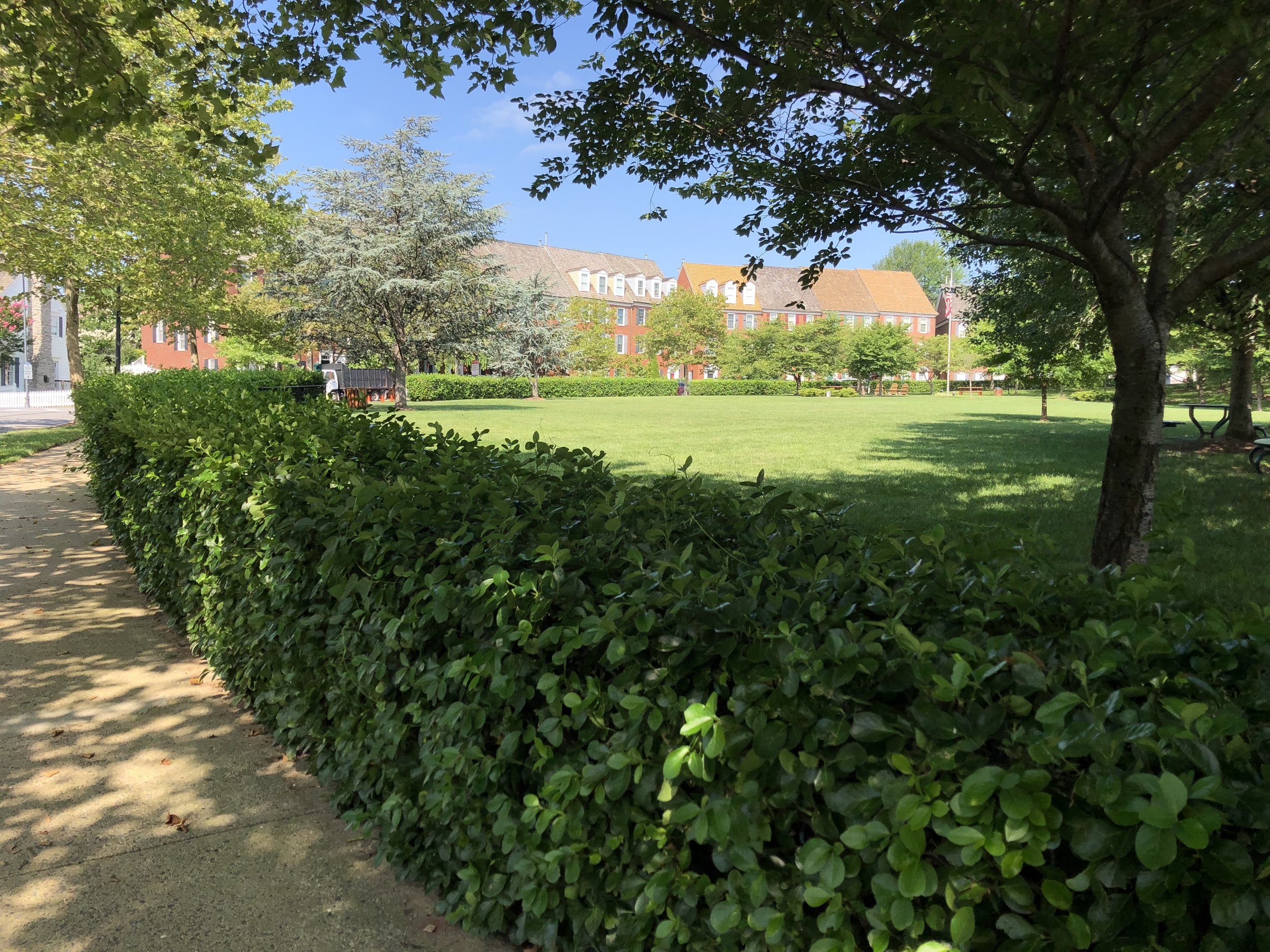The best paintbrush won’t have you turning out masterpieces. The high-tech speedo won’t have you laps ahead of your competition.
Yes, these tools may aid. They’re the cart. But they’re powered by the horse – the artist’s or athlete’s method. The way they play their game. Their technique.
If you want to power up your productivity and make accomplishment a daily routine (count me in): you need a method. Your own “workflow” method.
To be clear, you have a method. Everyone has a method (even if they don’t call it that). Mostly, we don’t notice how we get things done – we just get busy….
Most people have some sort of jerry-rigged habits – conscious and unconscious – that get them through the day. Maybe the method includes:
Working out of the inbox
Writing (or rewriting) a daily to-do list
A schedule packed with meetings
Reacting to whatever comes up (you know, being responsive)
Putting tasks on the calendar (and then moving them forward when they don’t get done)
Using a blend of sticky notes and their awesome memory
Holding check-in meetings
And so on . . .
Look at the past few days… and you’ll start to detect your method. You do have a method, a technique, the way you do stuff, the way you handle your work and life.
The question is: Does your method work?
Does your method reliably deliver the results you want?
Does your method leave you satisfied at the end of the day?
Does your method keep you focused on what matters?
Does your method give you confidence that you’re on top of things and nothing is “falling through the cracks”?
Does your method put you in control?
Does your method keep you energized?
Does your method have you playing your game the way you want?
Or… is their maybe, possibly, some room for improvement?
As the saying goes, if you want a different result, you have to do something differently.
Or put another popular way: Insanity is doing the same thing over and over again, and expecting a different result.
If you want a different – better – result, then look at your method, your technique – and refine it, upgrade it.
So before you download another productivity app, get your productivity game together.
Make sure you have a workable method you trust. Establish an effective technique to achieve your goals, aspirations, and intentions – on the daily, as they say.
A method is made up of some basic rules you follow – rules of engagement. (And for those rule-resisters, remember these are YOUR rules.)
Consider your workflow method as setting up the game board of work (and life). Without rules, there’s no way to win – you’re just looping aimlessly through Candy Land, or filling up your car with pink and blue pegs in the Game of Life….
Your method (in the madness) should help you:
1| Achieve crystal clarity.
If you’re going to bet on a horse, put your money on Clarity.
Imagine trying to use your GPS to get somewhere – but you’re not exactly sure where you’re going…. OR the exact coordinates of where you are now. Sure, you may know you want to go in that general direction (let’s say, “West”), and you know the vicinity of your current location. But, GPS doesn’t really work that way. Siri will end up driving you up a wall, but not to your destination.
Many underestimate the power of clarity until they experience the immediate boost, the sense of progress (and relief) that happens simply by getting clear. (Now THAT’S magic).
I see this all the time with my clients. The first step of getting crystal clear has them flying high. All of a sudden, what seemed vague, or looming, or overwhelming, or inscrutable is now doable, possible, within reach.
Without clarity, you’re smack dab in the fog. You know you’re busy and have a lot on your plate – but you’re not quite sure of the best move to make.
Your method should deliver crystal clarity about what is actually on your plate – the actions, projects, goals, requests, responsibilities you have committed to.
Only then, will you be able to
make clear-headed decisions on the fly,
direct and redirect your efforts,
say yes or no with confidence,
communicate persuasively,
and see the forest AND the trees.
With the escalating pace and volume of information, it’s easy for things to get muddled quickly. The constant flow of new requests, opportunities, challenges, and demands can cloud and confuse. Clarity is gold. And it’s at a premium in today’s noisy world.
Clarity allows you to navigate with confidence. Clarity fuels that horse.
And one more thing. When it comes to clarity, you can’t fix it and forget it. Clarity requires an everyday, dynamic engagement with your world. Things do change. Fast. And so your method must give you the capacity to recalibrate to clarity quickly.
Clarity is a virtue and will take you far. The vague rarely wins the day. Without clarity, you’ll be a cart without a horse, up a creek without a paddle… you get the idea.
So get a method that delivers clarity. Every day.
2| Make decisions.
Decisions are the meter of progress. Each day, you're confronted with…
So. Many. Decisions.
Yet, it's easy to put decisions off for another day. In fact, in my work with others (and myself), I’ve noticed a rampant lack of decision-making. This takes a toll, not only on progress – but also on energy. When indecision piles up, it drains, stresses, and overwhelms.
Typically, people avoid making decisions (even in the simplest things) for two primary reasons: 1) They don't want to limit their options; or 2) They don't want to make a mistake.
Here's the interesting thing about decisions: They almost always help you move forward, even if the decision is "wrong." It’s far easier to redirect when you're moving, than when you're standing still, or sitting out. Basic physics.
Your method should help you make smart decisions.
For example, people’s email is a pile of indecision. What if you had a rule that when you read an email you must make a decision about what you will do next – rather than push that decision into your future…. by going on to read the next email – that, of course, is more interesting than the one you’re reading now…?
Radical, yes. In fact, it might revolutionize your productivity. Just a little rule about making decisions on email could change your game for the better.
3| Prioritize confidently.
It’s easy to show up each day and get busy. There’s no end to the things calling your name. But are you doing the things that matter – or defaulting to the loudest voice?
Your method should help you determine what is priority for your time and attention.
Now, let’s be real. A priority isn’t etched in stone. No task or project is inherently a priority. A priority exists in relation to the whole– everything elseyou need to do. Priorities fluctuate and shift with the constant tide of information and constraints of time, energy, and resources.
You need a method that helps you assess these factors on the run, and determine where to put your focus at any given moment.
4| Optimize energy.
Without energy: game over. It’s that simple. (No horse. No cart. No go.)
Your method should optimize your energy. At the end of the day, you should feel energized. Not drained.
All living things have a biological clock, their own beat, their own ebb and flow. And while humans generally fall into certain typical patterns related to times of robust versus receding energy, each person has their own chronotype – their own circadian rhythm.
Yes, there are external realities that we may not have control over. However, your method should help you match your energy to the task, as much as possible.
For example, when your energy is strongest (often at the beginning of the day), do the work that requires concentration and cognitive muscle, rather than waste it on scrolling through email or Instagram.
When your energy is lagging, do those easier, routine tasks.
Your method should help you design your day to bring your best game, the optimum energy for the play.
5| Make progress on the strategic.
In the default mode, the urgent and immediate always win. That strategic thing, that bigger effort that isn’t in your face but could have real impact – gets relegated to, you know, another day.
Your method should promote step-by-step progress on those big things that will make a difference.
6| Focus.
Productivity requires focus. And yet, it’s no secret that focus is hard to come by – with all the bells and whistles, dings and pings that accompany your day. Your attention span continues to dwindle as the notifications accelerate. And if something or someone isn’t interrupting you, it’s likely you’ll interrupt yourself with a quick check of your phone or the news or the latest productivity app.
Like the blinders on a racehorse, your method should help you protect against the daily distractions, and keep you moving forward in your lane.
7| Run your email (instead of letting it run you).
If there’s anything that’s crying out for a rule, it’s email. Left unchecked, it takes over and calls the shots.
Hanging out all day in your inbox puts you squarely in the reaction mode, at the effect of other people’s agendas.
Email also earns the award for Best Procrastination Device Ever. It lulls you into thinking you’re doing something when really you’re just avoiding that paper you have to write, or that plan you need to create, or that difficult conversation you need to have, or that hard stuff.
Run right, email is a fantastic tool of the trade. Without rules, you become email’s tool – hopping with every notification.
So, before you reach for that new productivity app or organizer…..
First, make sure you have a good horse (a sound method). Then, you can add the cart (that app or organizer).
We love the cart – but we need the horse. Get a clear, workable method, some simple rules to power your efforts, to play your game…. and progress and accomplishment will become routine.
















